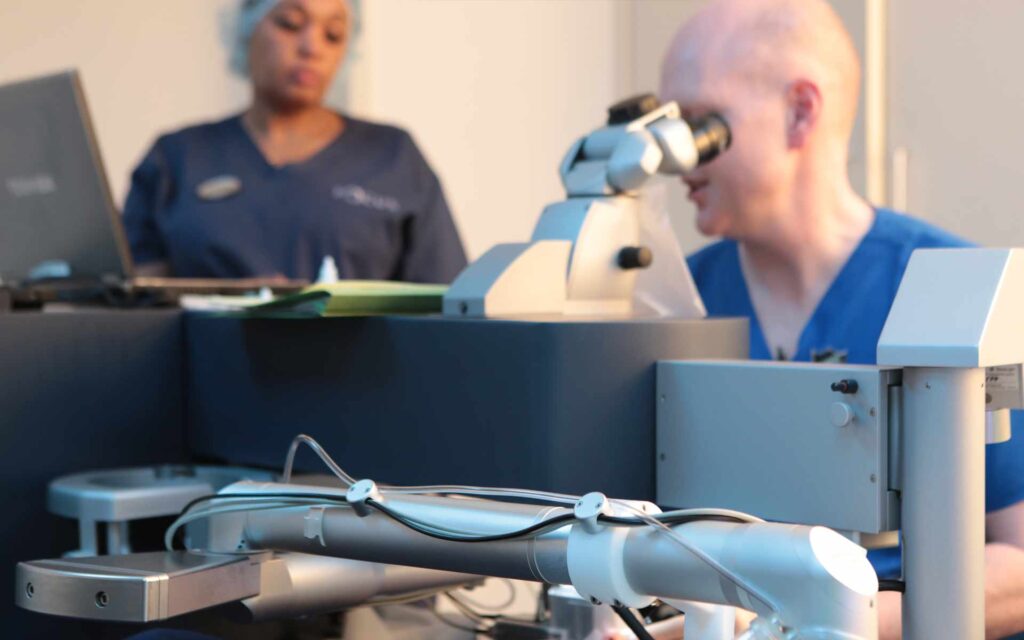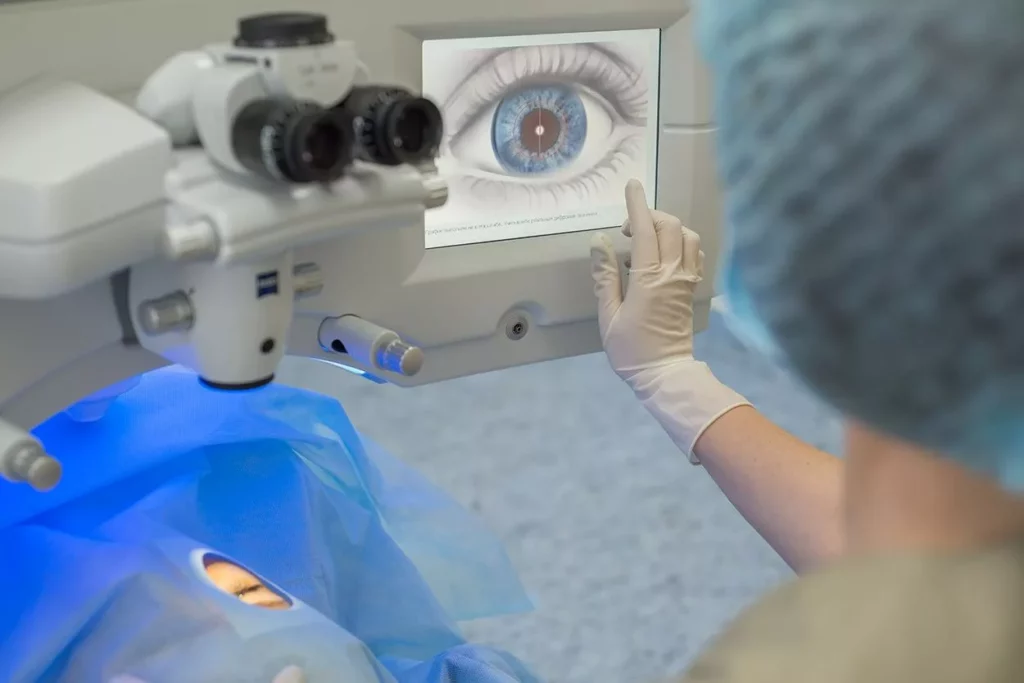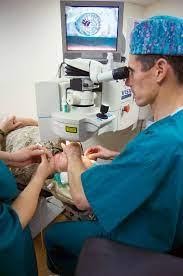Surgery LASIK (Laser-Assisted In Situ Keratomileusis) has gained immense popularity over the past few decades as a method for correcting vision. With millions of people undergoing this procedure worldwide, it becomes essential to understand both the advantages and disadvantages of LASIK. This article aims to provide a comprehensive view of LASIK eye surgery, discussing its mechanisms, benefits, risks, and everything you need to know to make an informed decision.
Understanding LASIK Surgery
LASIK surgery is a refractive procedure that aims to correct common vision problems such as myopia (nearsightedness), hyperopia (farsightedness), and astigmatism. The goal of the surgery is to reduce the dependency on glasses or contact lenses. The procedure involves the use of a laser to reshape the cornea—the front part of the eye—so that light entering the eye is focused correctly onto the retina, improving vision.
The LASIK procedure typically begins with the preparation of the eye. An ophthalmologist will start by numbing the eye with special eye drops to ensure comfort throughout the surgery. A small device is then used to hold the eyelids open, preventing any blinking. The next step is to create a thin flap in the cornea using either a microkeratome or a femtosecond laser. Once the flap is lifted, another laser is utilized to sculpt the cornea into the desired shape, followed by repositioning the flap. The entire process generally lasts about 15 minutes per eye.
Recovery from LASIK is typically quick, with many patients noticing improvements in vision within hours after the procedure. While surgery LASIK offers the possibility of life without glasses or contacts, it’s essential to understand the pros and cons of undergoing this surgery. Post-operative care is crucial, and patients are often advised to rest their eyes and avoid strenuous activities for a short period. Follow-up appointments with the ophthalmologist are scheduled to monitor healing and ensure that the cornea is reshaping correctly. Most patients can return to their normal activities within a day or two, although some may experience mild discomfort or visual fluctuations during the initial recovery phase.
Furthermore, it’s important to consider the long-term effects of LASIK surgery. Studies have shown that a significant percentage of patients achieve 20/25 vision or better after the procedure, which is often sufficient for most daily activities. However, some individuals may still require glasses for specific tasks, such as reading or driving at night. Additionally, the stability of vision can vary; while many enjoy lasting results, some may experience changes in their vision over time due to natural aging or other eye conditions. Therefore, a thorough pre-operative evaluation and discussion with an experienced ophthalmologist are essential to determine if LASIK is the right choice for each individual’s unique vision needs.

The Advantages of LASIK Surgery
1. Quick Recovery Time
One of the most significant benefits of LASIK surgery is the quick recovery time. Most patients can return to their normal activities within one to two days after the surgery. This quick turnaround allows individuals to resume their hobbies, work, and daily routines almost immediately.
Many patients find that their vision improves rapidly after the surgery. In fact, some report a substantial improvement just hours after leaving the surgical center. This swift recovery is a considerable advantage for those with busy lifestyles. It is not uncommon for patients to wake up the day after surgery with clearer vision than they have experienced in years, enabling them to engage in activities they love without the burden of visual impairment.
Moreover, the minimal downtime associated with LASIK surgery means that patients can often schedule their procedures around their work or personal commitments, making it a convenient option for those with tight schedules. The ability to quickly return to work or social engagements can significantly reduce the stress and anxiety often associated with surgical procedures. Read more about anxiety on https://www.nimh.nih.gov/health/topics/anxiety-disorders
2. Long-Lasting Results
LASIK is known for its long-lasting results. Many patients achieve 20/25 vision or better, and studies have shown that the effects of LASIK can last for years, if not a lifetime. The stability and durability of the results make LASIK a popular choice among those looking for a permanent solution to their vision problems.
It’s important to note that vision can change with age, and some individuals may still require reading glasses later in life, but the overall benefits of LASIK often remain significant and transformative. The procedure effectively reshapes the cornea, allowing light to focus correctly on the retina, which is a fundamental aspect of clear vision. As a result, many patients find that they can enjoy activities such as driving at night or reading without the frustration of blurred vision.
Additionally, advancements in LASIK technology have led to improved precision and outcomes, further enhancing the longevity of the results. Newer techniques, such as wavefront-guided LASIK, can address not only nearsightedness, farsightedness, and astigmatism but also higher-order aberrations, providing patients with superior visual quality.
3. Reduced Dependency on Corrective Lenses
Perhaps the most appealing aspect of LASIK surgery is the reduction in reliance on glasses or contact lenses. Many individuals experience a newfound freedom after surgery, allowing them to engage in activities like swimming, playing sports, or simply enjoying life without the hassle of corrective eyewear.
This newfound independence can enhance quality of life, providing a complete transformation for those who have worn glasses for years. Activities that were once cumbersome due to poor vision or the need for contacts become infinitely easier and more enjoyable. For example, athletes often find that their performance improves when they no longer have to worry about fogging glasses or losing contact lenses during competition.
Furthermore, the financial savings over time can be significant. While the initial cost of LASIK may seem high, many patients find that they save money in the long run by eliminating the need for ongoing expenses related to glasses and contact lenses, such as replacements, cleaning solutions, and eye exams. This economic benefit, combined with the enhanced lifestyle freedom, makes LASIK an attractive option for many individuals seeking to improve their vision permanently.

The Disadvantages of LASIK Surgery
1. Potential Side Effects
Like any surgical procedure, LASIK is not without risks. Some patients may experience side effects such as dry eyes, glare, halos around lights, and other visual disturbances, particularly in low-light conditions. These side effects can be temporary for many but may persist for a small percentage of individuals, leading to ongoing discomfort.
Dry eyes, in particular, can be a significant issue, as the procedure may temporarily reduce tear production. Patients are often advised to use artificial tears or other medications for relief. Understanding these potential side effects is crucial before deciding to proceed with surgery. Click here to find more about side effects.
2. Not Suitable for Everyone
Another disadvantage of LASIK surgery is that it is not suitable for everyone. Certain factors, such as age, prescription stability, and existing eye conditions, can make someone an unsuitable candidate for the procedure. Individuals with severe dry eyes, corneal diseases, or poorly controlled diabetes may need to explore alternative vision correction options.
It’s essential for potential candidates to undergo a comprehensive eye examination and consultation with an ophthalmologist to assess their suitability for LASIK. This ensures that the best decision is made based on individual circumstances.
3. Cost Considerations
While LASIK may save money in the long run, particularly for those who regularly purchase glasses or contact lenses, the initial cost of the surgery can be a significant barrier for many individuals. LASIK is often considered an elective procedure, meaning that insurance may not cover the expense, leading to substantial out-of-pocket costs.
Many clinics offer financing options to alleviate financial burdens, but potential patients should weigh their financial situation against the potential benefits of undergoing LASIK. Budgeting for the surgery, while considering its long-term effects on vision, is vital in making an informed choice.
Making the Decision about LASIK Surgery
1. Consultation with an Expert
Before making a decision, consulting with an eye care professional is essential. They can provide crucial insights into the LASIK procedure, answer any questions you may have, and help you evaluate your candidacy for surgery. During the consultation, it is also an excellent opportunity to discuss concerns, expectations, and any alternative procedures that may be more suitable.
Don’t hesitate to ask plenty of questions during this consultation. Understanding every aspect of the procedure will help you make the most informed decision possible.
2. Weighing Personal Lifestyle
Consider your lifestyle and how LASIK surgery could impact your daily activities. If you lead an active life or partake in sports and outdoor activities, the benefits of improved vision without glasses or contacts can be a significant motivator. Conversely, if you are hesitant about the surgical aspect, it might be worth weighing different corrective options.
3. Realistic Expectations
Finally, it’s crucial to manage expectations. LASIK can correct vision significantly, but it may not always guarantee perfect vision for everyone. Understanding the limitations of the surgery will help prepare you for the potential outcomes.
In conclusion, while LASIK surgery presents numerous advantages such as quick recovery, long-lasting results, and reduced dependency on corrective lenses, it also comes with its set of disadvantages, including potential side effects, cost, and not being suitable for everyone. Weighing these factors carefully and consulting with an expert will lead to a well-informed decision regarding whether LASIK is the right option for you.
Other resources: LASIK Surgery in Sydney




